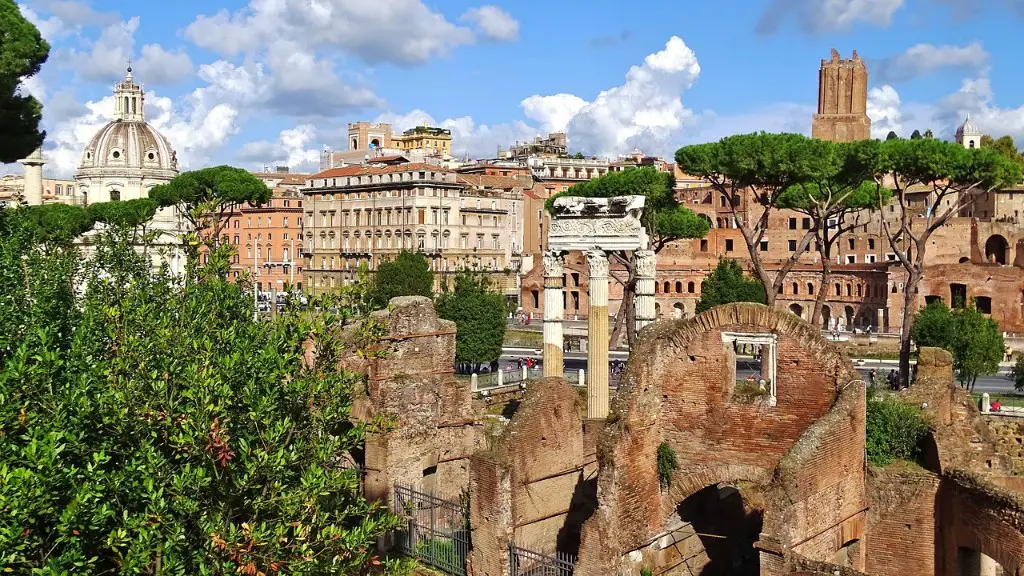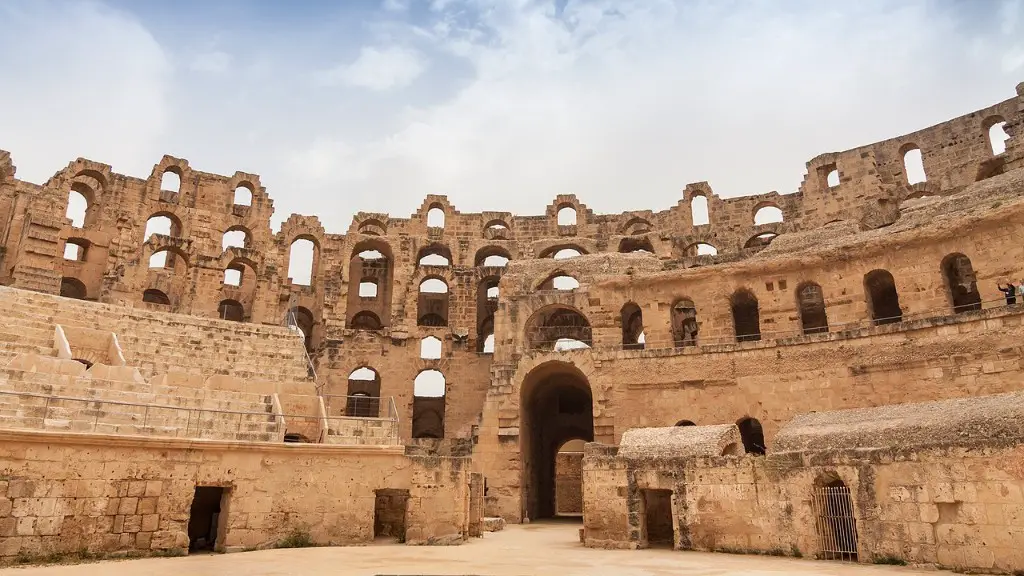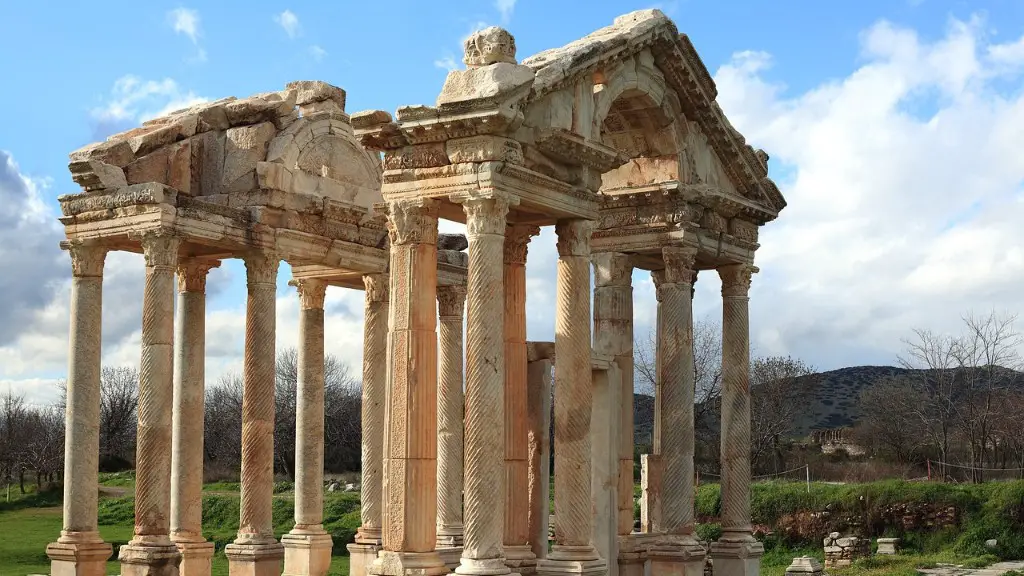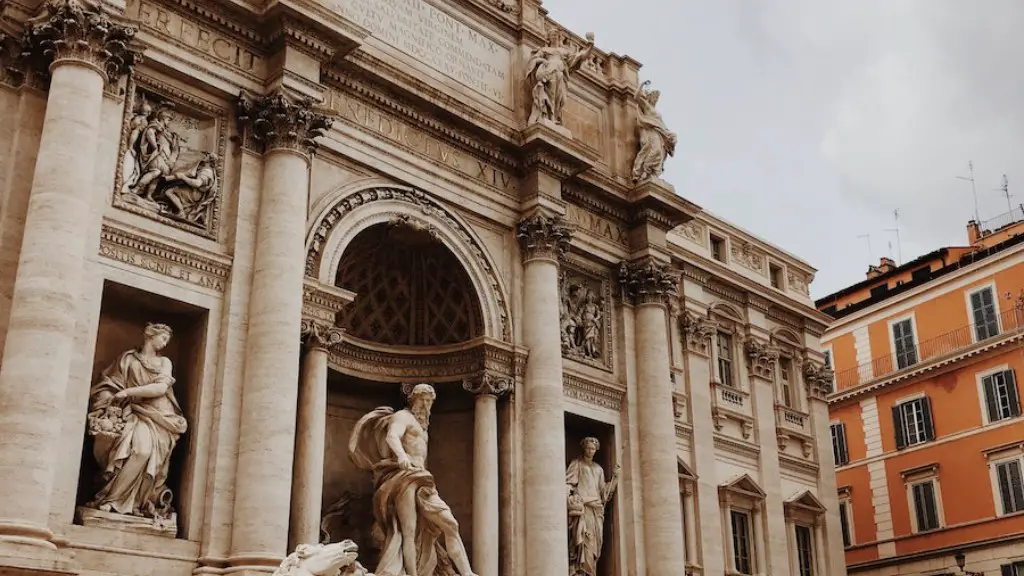Background Information
Ancient Romans are one of the most fascinating and influential civilizations in human history. Far-reaching in its ramifications, Roman culture spanned an expansive region, crossing the Mediterranean and expanding into parts of the Europe, the Middle East and Africa. Understanding how people in the ancient world lived, worked and interacted is key to comprehending the legacy of the Roman Empire.
Geographical Reach
At its peak in the 2nd century CE, the Roman Empire covered an area of almost 5.5 million square miles across three contiguous continents. From the Iberian peninsula in the west to the Caucasus mountains in the east, and from the North Sea to the deserts of North Africa, the borders of the Roman Empire included all or part of 44 different modern-day countries.
Layout of Roman Cities
At the center of Roman urban life was the forum, a large rectangular or square space surrounded by colonnades containing public buildings, such as temples, basilicas for business transactions, and tabernae for merchants. Other structures included theaters and amphitheaters, used for entertainment and religious rituals, as well as monuments surrounding the forum that were dedicated to various gods, emperors and other important people.
Population and Social Classes
The Roman Empire was comprised of a wide range of social classes and ethnicities, including slaves, freedmen, and citizens. The majority of the population lived in cities, but there were also small rural communities scattered across the countryside. Rome itself was the most populous city, with a population of a million people at its peak.
Various Buildings
Roman cities were full of civic buildings, public baths, aqueducts and monuments, but many citizens also lived in apartment buildings, or insulae, which were often no more than three stories high. The wealthier residents of Roman cities lived in single-family homes, or domus, with gardens and courtyards.
Language and Religion
The majority of the Roman Empire was polytheistic, meaning it followed multiple, separate gods and goddesses. Latin was the official language and was used in the legal system, literature, and the military. Latin eventually branched off into other languages, such as French, Spanish and Italian.
Cultural Influence and Traditions
The Roman Empire had a profound influence on modern society and culture. Its landscape, politics and citizenship were based on imperialism and colonialism, with an emphasis on law and order, as well as a robust system of taxation and public services. Roman culture is evident in architecture, art, literature, engineering, philosophy, and many other aspects of contemporary life.
Archives
Roman archives played a major role in many aspects of life in the empire. They contained legal documents and correspondence between magistrates, government officials and citizens. They were also used to record property rights, criminal cases and other legal proceedings.
Fashion
Roman fashion was influenced by many different cultures, ranging from foreign nations to the various religions practiced within the empire. Clothing styles and accessories varied widely, with men wearing woolen togas, tunics and cloaks, while women wore stola (long dresses) and palla (shawls). Sandals, jewels and makeup were also popular.
Oral and Written Records
The Roman Empire left behind a wealth of written and oral records, offering unique insight into the lives of people living in the ancient world. Surviving writings from the period include historical accounts, legal documents, and works of literature, such as plays, poetry and philosophy. These writings, such as those of the renowned Roman historian Tacitus, offer invaluable clues about the lives of these ancient peoples.
Entertainment and Games
Popular pastimes in the Roman world included chariot racing, gladiatorial combat, theater and music. Theater, for instance, normally consisted of plays that focused on mythological stories, such as the story of Aeneas, who was the legendary founder of Rome. Board games such as Latrunculi and various versions of dice were also popular.
Education
Children of the Roman Empire were taught basic fluency in Latin, as well as numeracy, reading and writing. Boys were usually educated in rhetoric and philosophy, while girls were taught how to embroider and spin cloth. The Roman education system was highly organized, and student progress was often measured by exams.
Economy
Economic activity in the Roman Empire relied on different currencies, such as bronze coins and the aureus, a gold coin. Trade revolved around the import and export of goods and services, with long-distance trade networks spanning the Mediterranean. Taxation was also a major source of revenue, with both direct and indirect taxes levied on citizens.
Agriculture and Food
Agriculture was one of the primary sources of income for many Roman citizens. Wheat, olives, figs and fruit were staples, while seafood and pork were consumed as well. Different parts of the empire also adopted different methods of cultivation, such as vineyards in Italy and fields in North Africa.
Religion, Politics and Military
The Roman Empire operated under a system of oligarchy, with rule of law and a Senate in place to guide the political system. Religion played an important role, with multiple gods, goddesses and customs present. The empire also maintained a vast military, with an army of almost half a million men and an elite corps of Praetorian Guards.



